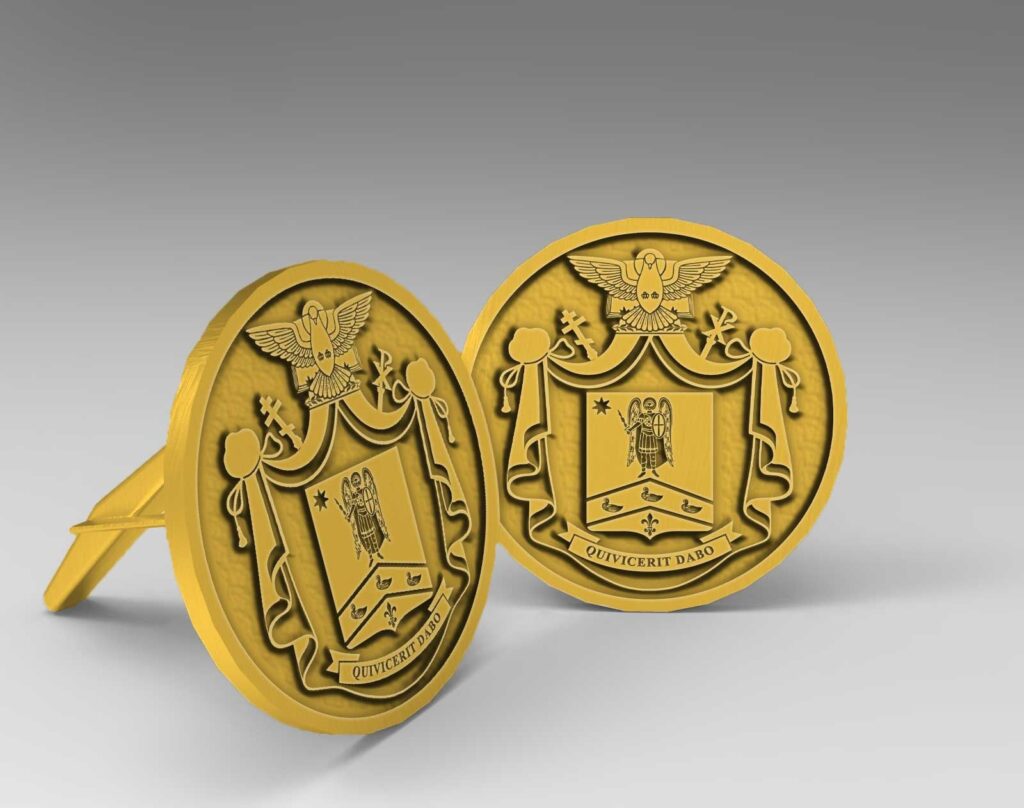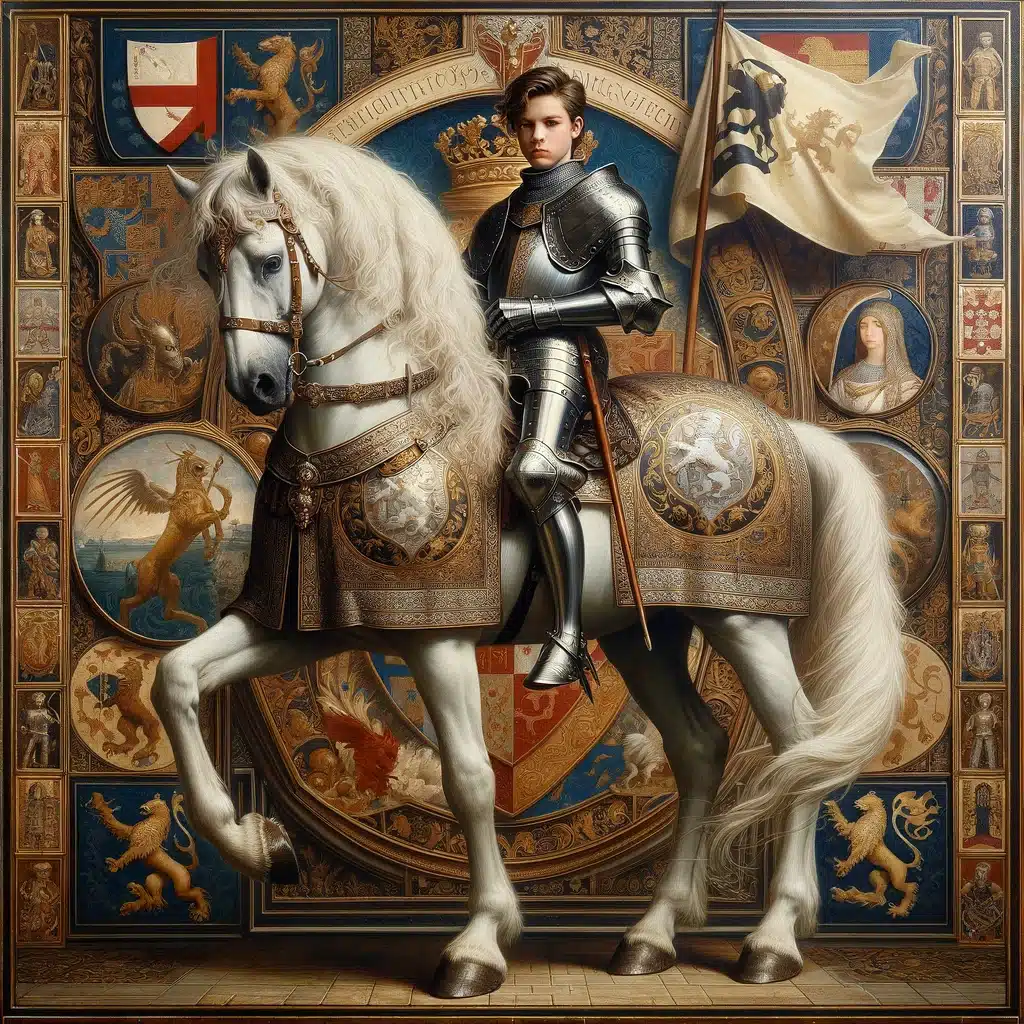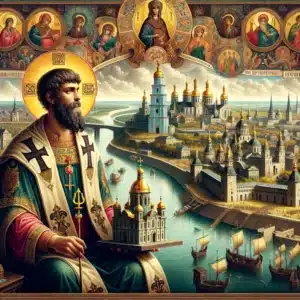Connection to the family line: Lentulus > Erlach (in Bern) > Fasnacht (Bern to USA) > Cleenewerck
LENTULO (Lentolo), Scipione . – He was born in Naples in early November 1525 to Cesare, belonging to an ancient patrician family. The father died, he was adopted by the noble Campania GA Guagliardo, second husband of the mother.
In 1535 he entered the convent of the Carmelite friars of Naples, where in 1539 he became a professed. He remained there for three years, in order to study theology and homiletics and obtain the preacher license. In 1542 he moved to Siena and remained there until 1544, then to Ravenna, where he seems to have joined the group of followers of the heterodox minority Giovanni Buzio da Montalcino. Later he stayed in many cities, including Rome and Ferrara. In the latter city in 1546 he enjoyed the protection of the Duchess Renata of France, prone to Calvinism. A year later he perfected his theological studies in Padua, probably at the school of his Order. In 1549 he participated in Venice in the general chapter of the Carmelites and obtained the degree of doctor. On the occasion of Lent of 1550 he held his first sermon in Caserta.
The definitive conversion of the L. probably took place around 1552, when he was at the service of the bishop of Policastro NF Missanelli, sympathizer of the Reformation; in this period it appears that he exercised intense preaching activity in a way that was not entirely in accordance with the doctrine of the Church. For two years he was secretary or preceptor following Baron GA Mediano di Cabalino, then in 1555, having moved to Lecce for security reasons, he began reading Luther’s commentary on the Letter to the Galatians . Paul. After a few months he was arrested and transferred to Naples, to then be sent to Rome by order of the Inquisition, where he underwent a trial in 1556. L. probably formally abjured to avoid the death penalty, but did not escape the sentence to perpetual prison in Naples.
Here, despite his detention, he resumed contact with some of the filoriformati, including the nobleman L. Campilio, whom he had met in Ferrara. The following year he managed to escape and, after a period of continuous displacements that led him to Sicily, he embarked, in 1559, for Genoa. Then he went on to Geneva, the city where he appears to have lived since May of that same year. Here he listened to the sermons of G. Calvino, but above all he was accepted into the Church reformed by the minister Lattanzio Ragnoni, where he was a teacher of Italian for a short period, and perfecting his knowledge of biblical languages and reformed theology. In August he refused the post offered by the shepherds’ company to become minister of the reformed church of Carignano in Piedmont,
His reputation as an orator, combined with the shortage of preachers in the valleys, was such that in the early months of 1560 he went to also serve the church of Carignano and visit Villanova d’Asti, where he preached and baptized publicly. At the end of April he returned to Angrogna just in time to escape the persecution unleashed in the previous January by the Duke of Savoy Emanuele Filiberto; in May he married Waldensian Maria Guisani, from whom he would have ten children. To try to avoid the war, at that time the ministers commissioned the L. to translate into Italian the draft of the Confession de foi des églises réformées de France of 1560, later known as the Confession of Rochelle, to which he added a preface in his own hand, addressed to the Savoy duke on behalf of the churches of Piedmont. The L. also addressed a letter to the Duke’s envoy, Filippo di Savoia, Count of Racconigi, on delicate doctrinal issues.
On 26 July 1560, during the negotiations, a dispute was held in the temple of Chiabazzo, especially concerning the meaning of the Mass and the Eucharistic dogma: the L. and the Jesuit A. Possevino, then the Filippo da Castellazzo served, and the dispute turned into a real personal attack on the Protestant pastor. The L. in the following September unnecessarily wrote a letter to Renata di Francia asking her to intercede with the duke to avoid clashes between the Savoy and Waldensian forces and, despite the outbreak of the conflict, he remained in the valleys until the end of the year, when, expelled with the other ministers, he moved to the village of Pattemouche to save his wife. In March 1561 the L. left for Geneva, to look for reinforcements to be sent to the besieged valleys and to contact Calvino and Théodore de Bèze.Letter to a gentleman from Geneva , published in Histoire mémorable de la guerre … (original text with Italian version opposite, edited by E. Balmas – V. Diena, Turin 1972, pp. 148-161) which he sent to Beza, convincing him of the responsibility of the Savoy duke in the persecutions of the Waldensians.
With the Cavour convention of 5 June 1561, which allowed the public exercise of the reformed religion in the valleys, the L. was able to return to Piedmont as pastor of Prali and later of Dronero, in the marquisate of Saluzzo, where he undertook to fight diffusion of antitrinitarian ideas diffused by GP Alciati. In the same month, the aforementioned Histoire mémorable came to light in an anonymous printed version …. The text, then re-proposed again in the same year and in 1562, presents thematic and conceptual affinities both with the Letter , although being more detailed and in a more balanced tone, and with the subsequent Historia of the great and cruel persecutions…, of which there are two handwritten versions, one, composed between 1582 and 1594, preserved in Oxford (Bodleian Library, Barlow , 8), and the other kept in Bern (Burgerbibliothek, Mss. , A.93; ed. edited by T. Gay, Torre Pellice 1906), which dates back to 1595 and was prepared for an unrealized print.
Thanks to these three works, L. inaugurates Waldensian historiography. In particular in Historia , which should have developed from a nucleus composed in 1561 itself, later integrated with information on initiaof the movement and the tragic events that occurred in Provence and Calabria, the L. still dwells on what had happened in the valleys during the Savoy persecutions. Despite the propaganda imprint, he manages not to interpret historical events according to too rigid theological criteria, being the first to treat Waldensians in relation to the biblical concept of the people and placing the accent on the word of God, to which they must respond. In the Bernese manuscript, however, some passages have been eliminated and especially the entire eighth book of the Oxford document, which contained various criticisms of the Waldensians, accused of being too docile towards Catholics and disrespectful of pastors, asking the question of their right to resist with weapons.
The peace of the valleys was again disturbed by the act of persecution that Emanuele Filiberto issued on May 25, 1565, following which, in the early days of 1566, the L. was removed from Piedmont. The expulsion must probably be connected to the publication of a polemical Treatise on the first responses … by Balbani, directed against the Jesuit Possevino and printed in Geneva (typ. O. Fordrino) in 1564. In this writing the L. was the author of a analogous previous booklet published anonymously, without place or date, but presumably printed in Geneva in 1561, concluded by a prayer of intercession for Possevino and titled in a way that effectively summarizes the controversial content: Short answers to a certain writing, which Antonio Possevino sent to the faithful …In which it is demonstrated with the authority of the word of God, and of the ancient Fathers that he has badly tried the private mass, and the monastic vows to be worthy things, that the Christians accept them, and receive … ; in this period the L. also composed an unpublished booklet of Answers according to the pure and only word of God to false reasons and objections (in worldly sophisms … , edited by T. Gay, Torre Pellice 1907) with which friends and Catholic relatives had dissuaded by letter six “poor brothers” from Carignano from going to Geneva.
The whole essay focuses on the uncompromising apology of the coherence between faith and life, and could constitute a response to the arguments in favor of the concealment of one’s faith, spread at that time in the valleys by the Florentine D. Baronio. The L. in fact, in accordance with Calvin’s theory, proposed only exile or martyrdom as legitimate forms of resistance to established authority.
Refugee first in Lyon and then in Geneva, after a stop in Zurich by H. Bullinger, in March 1567 the L. took up service at the church of Monte Sondrio, but also here he was opposed by the community. After G. Zanchi left the church of Chiavenna, the L. was appointed pastor in his place in August of the same year and in May 1568 he was welcomed as a member of the Rhaetian synod which was held in Zuoz. In Chiavenna he found himself facing, on the one hand, Carlo Borromeo’s attempt to bring the inhabitants of Valtellina and the Italian-speaking valleys to Catholicism, on the other, the spreading in this territory, also by the Sicilian humanist Camillo Renato, of antitrinitarian and Anabaptist doctrines. In 1570 the political authorities of the Grisons, at the request of the reformed pastors, including the L., decreed that, under penalty of
All documentation relating to the dispute taking place at this time to defeat heterodoxy was put in writing by L. in the Commentarii conventus synodalis in oppido Clavenna summoned (Bern, Burgerbibliothek, Mss., A.93.7), which amply testify to the characteristics of the heretical movement in Switzerland between 1560 and 1570. In particular, L. was firm in condemning the conceptions of the exile Giovanni da Modena, which re-proposed the need for good works for the salvation; above all he engaged in a personal controversy with the minister Bartolomeo Silvio, condemned by the synod of Chur in 1570 for having contested the decree of profession of faith, and author of a manuscript booklet in which he asserted that the magistrate legitimately pursues only the actions and not the defendants’ thoughts. Against this libellus L. wrote a Responsio orthodoxain which he attacked Silvio from the theological and political point of view, accusing him of Anabaptist ideas on the duties of the magistrate towards heretics. The work, already written in 1570, was published by L. only in 1592 in Geneva (typ. J. Lepreux), after a consultation with the Ligurian ministers and with Beza himself. It seems that the L. in 1568 had also written a booklet entitled Della Chiesa di Chiavenna to note the things that resolve the day , unpublished and for a period preserved in Bern, but now lost.
In 1575 the L. went to Chur to participate in a synod, in the company of Lucchese S. Calandrini. Since his first settlement in the city he intensified his correspondence with Thobias Egli, pastor of Chur, and above all with various theologians and pastors, both in Zurich and in Basel, asking them for advice on theological and practical questions of the life of the Church, as well as financial subsidies for the printing of his works: among them Bullinger, J. Wolf, J. Simler, R. Gwalther, JJ Grynäus.
In particular, through him, the L. constantly sent Bullinger, with weekly or fortnightly frequency, real bulletins with punctual news from all over Europe, which highlighted his familiarity with international politics. In some cases the L. commented on the events, as on the occasion of the rise to the throne of France of the Huguenot Henry of Bourbon and his subsequent conversion to the Catholic religion: if in the first circumstance the L. saw biblical motifs, feeling the certainty of the hand of God on the history of the world, when Henry IV abjured him in 1593, while not hiding his disappointment, he remembered that God had also used pagan kings to protect his people.
The political thought of L. also emerges from some pamphlets translated in Chiavenna and pertaining to the events connected with the massacre of St. Bartholomew, such as the vehement marvelous Discourse of life, actions and recreational activities of Caterina de ‘Medici … (Bern, Burgerbibliothek, Mss . , A.93.8), unpublished translation of an anonymous and homonymous work in French, published by a Huguenot pen in 1575, or the Historia dell’uccisioni et horribili cruelty ( ibid ., A.89), incomplete and unpublished translation of the De furoribus Gallicis (1573), composed on the occasion of the assassination of Gaspard de Coligny, by Ernesto Varamundo Frisio. A final translation, also unedited, of a political work isThe copy of a letter sent from England ( ibid ., A.93.10), the original of which, although written by an English anti-Elizabethan Catholic in 1588, is in fact profiled as an apology for his own people. However, the text that best represents the political thought of L. is the Simple narration of the life and death of … Saul and David … ( ibid ., A.87), attributable to the years 1591-93, in which the pastor implicitly, against the Machiavelli’s thought does not recognize politics as an autonomous morality, but examines every political act at the judgment of the Scripturesand, while believing the intervention of the magistrate as regards the affairs of religion, shows that he does not consider princes and magistrates in a particular relationship with God.
In this period the L. devoted himself extensively to preaching; consistent indications suggest that the short and unpublished Discourse of Prosperity and Adversity is precisely the text of a sermon conducted on the parallel track of divine predestination and the need for personal repentance. Regarding the cultural and theological formation of the faithful, the L. already in Geneva in 1566 had developed an Italian grammar for beginners, written in Latin to overcome the linguistic differences of the different countries, published shortly after by J. Crespin in the same city and perhaps the following year in Paris, entitled Italice grammatices praecepta et ratio, which represents his most fortunate and circulating text, with sixteen successive editions, also in English and German. The L., in addition to giving private lessons, worked for the foundation of the college of Sondrio in 1582, to direct which he called the son of him, Raphaël.
He translated into Italian, but did not publish, first the Book of the Scandals … by Calvin (1550) and then, perhaps in 1594, the Excellent Discourse of Life and Death … by the Huguenot P. Duplessis-Mornay (1575), in to which the theme of meditatio mortis is combined with that of predestination (Bern, Burgerbibliothek, Mss. , A.88).
In 1581 he argued with the anti-Trinitarian merchant F. Pestalozzi who would convert in 1596. In these years the L., who also worked to free coreligionists imprisoned by Catholics, such as the merchant GA Pero, replied to the first of the Letters against Calvin (1583), composed by the Franciscan preacher F. Panigarola, with his unpublished Confutation of the first letter … ( ibid ., A.93.9), in which he summarized the reformed ecclesiology, according to which the true Church is guided by the Holy Spirit and from Sacred Scripture and true believers are known only by God. On July 15, 1584 the L. ended the controversial Treaty of the Antichristwhich – radically reworked, was published in Geneva in 1596 as an appendix to Calandrini’s apologetic work, Confutatione delle calunnie – in which L. claims that the pope corresponds to the Antichrist described in the New Testament , while refraining from identifying in the head of the Roman Church an eschatological figure.
Finally, among the works considered minor, there are the lyrical compositions in Italian, placed at the beginning or at the end of the works of the L. who, using widely Petrarches forms and schemes, are marked by the more orthodox Calvinism. Among these are the Sonnet to Christ , placed as an incipit of the Historia , as well as various translations of poetic works by Calvino and Duplessis-Mornay.
From the first half of the nineties the L. delegated more and more the pastoral responsibilities to the Lucchese Orazio Mei, who would succeed him in the ministry in Chiavenna around 1596. In March 1597 in Piuro he took part in a last dispute on the meaning of the mass, against the Dominican GP Nazari, the jurist G. Torriani and two Jesuits. In this period the L. definitively left his duties and after about a year he was bedridden by arthritis.
L. died in Chiavenna on 28 January. 1599.
Sources and Bibl. :
The main study on L. is E. Fiume, SL 1525-1599. “Quotidie laborans evangelii causa”, Turin 2003, to which you are referred for the bibliography. There are studies not mentioned there: T. Gay, SL (historical notes) , in Bulletin de la Société d’histoire vaudoise , XXIII (1906), pp. 104-107; T. Balma, Public religious disputes in the Valleys … , Torre Pellice 1943, pp. 3-5; L. Emery, Old Italian-German manuals … , in our language , X (1949), pp. 18 s .; D. Cantimori, Nicodemism and Council hopes …, in Historical Studies , II, Humanism, Renaissance, Reform, Turin 1976, pp. 524-527; J. Picot, The SL family , in Bull of the Waldensian History Society , 1956, n. 63, pp. 66 s .; S. Rossi, ” … the only-knowing men of Europe” … , in Id., Research on humanism and the Renaissance , Milan 1969, pp. 107 s., 121; A. Rotondò, Italian exiles in Valtellina … , in Riv. stor. Italian , LXXXVIII (1976), pp. 756-791, in particular pp. 780 s., 785, 789; E. Balmas, An unedited …, in Bull of the Waldensian Studies Society , 1983, n. 153, pp. 31-56 (on the discourse of prosperity … ); G. Gonnet, On a new manuscript of SL’s “Historia delle grandi e crudeli persecutioni”, ibid. , 1987, n. 160, p. 67; The Italian Reformation of the sixteenth century and the diffusion of Renaissance culture. A bibliography of the secondary literature (ca. 1750-1997) , edited by J. Tedeschi – JM Lattis – M. Firpo, Modena 2000, pp. 334-336.














